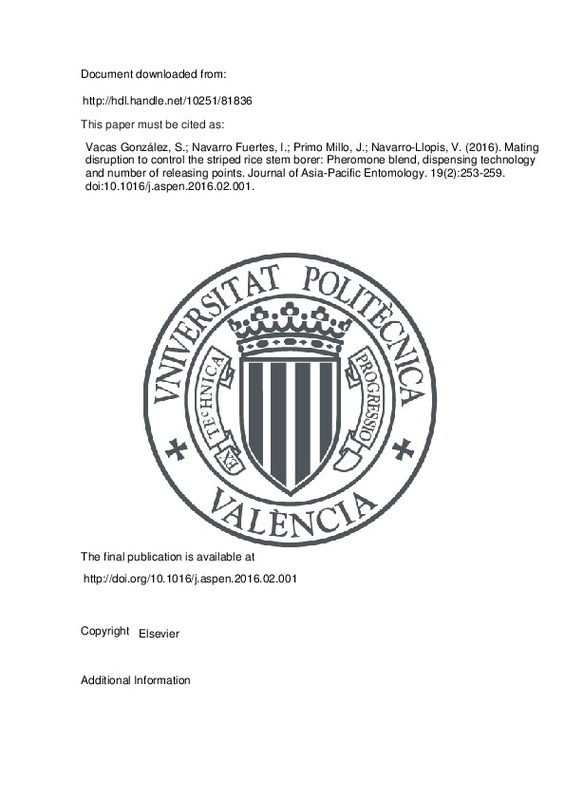JavaScript is disabled for your browser. Some features of this site may not work without it.
Buscar en RiuNet
Listar
Mi cuenta
Estadísticas
Ayuda RiuNet
Admin. UPV
Mating disruption to control the striped rice stem borer: Pheromone blend, dispensing technology and number of releasing points
Mostrar el registro completo del ítem
Vacas González, S.; Navarro Fuertes, I.; Primo Millo, J.; Navarro-Llopis, V. (2016). Mating disruption to control the striped rice stem borer: Pheromone blend, dispensing technology and number of releasing points. Journal of Asia-Pacific Entomology. 19(2):253-259. doi:10.1016/j.aspen.2016.02.001
Por favor, use este identificador para citar o enlazar este ítem: http://hdl.handle.net/10251/81836
Ficheros en el ítem
Metadatos del ítem
| Título: | Mating disruption to control the striped rice stem borer: Pheromone blend, dispensing technology and number of releasing points | |
| Autor: | Navarro Fuertes, Ismael | |
| Entidad UPV: |
|
|
| Fecha difusión: |
|
|
| Resumen: |
The effect of using low densities of different dispensing technologies on mating disruption of the striped rice stem borer, Chilo suppressalis Walker, was evaluated in the rice-growing area of Valencia (Spain) from 2011 ...[+]
|
|
| Palabras clave: |
|
|
| Derechos de uso: | Reserva de todos los derechos | |
| Fuente: |
|
|
| DOI: |
|
|
| Editorial: |
|
|
| Versión del editor: | http://doi.org/10.1016/j.aspen.2016.02.001 | |
| Agradecimientos: |
We would like to thank Francisco Girona, Vicente Dalmau and Manuel Lainez (CAPA-Generalitat Valenciana) for their assistance in organizing experiments and providing trial fields. In addition, thanks to Helen Warburton for ...[+]
|
|
| Tipo: |
|







![[Cerrado]](/themes/UPV/images/candado.png)


